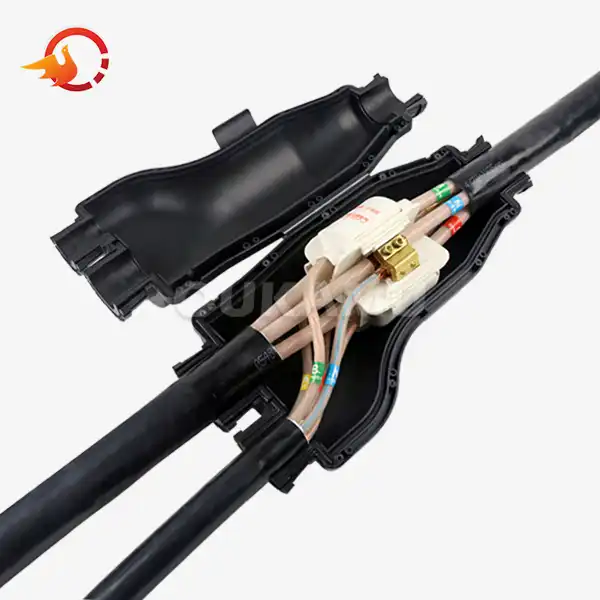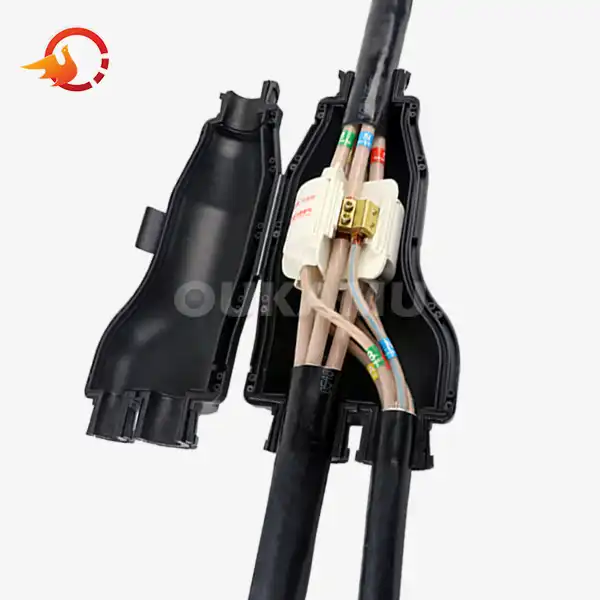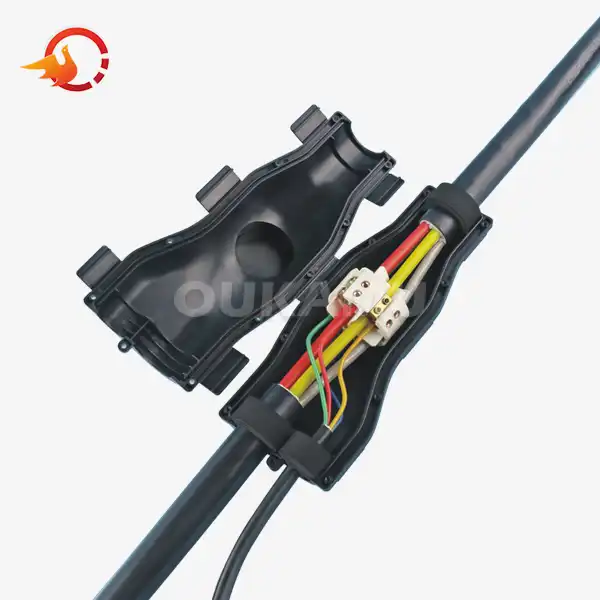What is branch wiring in electrical?
 2025-11-13 11:13:18
View:389
2025-11-13 11:13:18
View:389Branch wiring is a crucial component of electrical systems in both residential and commercial settings. It refers to the network of electrical circuits that distribute power from the main service panel to various outlets, switches, and fixtures throughout a building. Understanding branch wiring is essential for anyone involved in electrical work or home improvement projects. In this comprehensive guide, we'll explore the key components, differences from main wiring, and practical applications of branch wiring systems.
Key Components of Branch Wiring Systems
Branch wiring systems consist of several essential components that work together to distribute electricity safely and efficiently. Let's delve into these key elements:
Circuit Breakers
Circuit breakers are the guardians of branch circuits. They protect against overloads and short circuits by automatically interrupting the flow of electricity when necessary. Modern circuit breakers, like those used in OUKAMU's advanced systems, offer enhanced safety features and precise control.
Branch Circuit Conductors
These are the wires that carry electricity from the main panel to various outlets and fixtures. Typically, branch circuit conductors are made of copper or aluminum and are insulated to prevent electrical leakage. OUKAMU's branch cable joints ensure seamless connections between these conductors, enhancing the overall reliability of the system.
Outlet Receptacles
Outlet receptacles are the points where electrical devices can be plugged in. They come in various types, including standard 120V outlets, GFCI (Ground Fault Circuit Interrupter) outlets for areas near water, and specialized outlets for high-power appliances.
Switches
Switches control the flow of electricity to lights and other fixtures. They come in various types, including single-pole, three-way, and dimmer switches. OUKAMU's innovative branch wiring solutions incorporate advanced switching technologies for enhanced control and energy efficiency.
Junction Boxes
Junction boxes house wire connections and splices, providing a safe enclosure for these critical junctions. They play a crucial role in maintaining the integrity of branch wiring systems and facilitating future modifications or repairs.
How Branch Wiring Differs from Main Wiring?
While both branch wiring and main wiring are integral parts of an electrical system, they serve different purposes and have distinct characteristics:
Voltage Levels
Main wiring typically carries higher voltages (240V in residential settings) from the utility connection to the main service panel. Branch wiring, on the other hand, usually operates at lower voltages (120V) suitable for most household appliances and devices.
Current Capacity
Main wiring is designed to handle the total electrical load of the building, often requiring thicker wires and higher amperage ratings. Branch circuits have lower current capacities, tailored to the specific needs of the areas they serve.
Distribution Pattern
Main wiring follows a more linear path from the utility connection to the main panel. Branch wiring, as the name suggests, branches out to various parts of the building, creating a complex network of circuits. OUKAMU's branch cable technology allows for flexible and efficient distribution patterns, adapting to diverse architectural layouts.
Protection Mechanisms
While main wiring relies on the main circuit breaker for overall protection, branch circuits have individual circuit breakers or fuses. This allows for more localized protection and easier troubleshooting of electrical issues.
Accessibility
Branch wiring is generally more accessible for maintenance and modifications. This accessibility is enhanced by OUKAMU's innovative branch joint solutions, which allow for easy connections and future expansions without disrupting the entire system.
Practical Uses of Branch Wiring in Electrical Layouts
Branch wiring finds numerous applications in both residential and commercial settings. Let's explore some practical uses:
Residential Applications
In homes, branch wiring is essential for powering everything from lighting fixtures to kitchen appliances. Here are some common residential applications:
- Lighting Circuits: Dedicated circuits for indoor and outdoor lighting, often controlled by multiple switches.
- Appliance Circuits: Separate circuits for high-power appliances like refrigerators, ovens, and air conditioners.
- General-Purpose Outlets: Circuits that power standard wall outlets for everyday use.
- Specialized Circuits: GFCI-protected circuits for bathrooms and kitchens, and AFCI (Arc Fault Circuit Interrupter) circuits for bedrooms.
OUKAMU's branch wiring solutions offer enhanced flexibility and safety for these residential applications, ensuring reliable power distribution throughout the home.
Commercial Applications
In commercial settings, branch wiring becomes even more complex and critical. Some applications include:
- Office Equipment Circuits: Dedicated circuits for computers, printers, and other office equipment.
- Industrial Machinery: Specialized branch circuits for powering heavy machinery and equipment.
- Retail Lighting and Display: Flexible branch wiring systems for adaptable store layouts and lighting designs.
- HVAC Systems: Dedicated circuits for heating, ventilation, and air conditioning units.
OUKAMU's advanced branch cable technology has been successfully implemented in various commercial projects, including the JinRenTong highway, demonstrating its reliability and efficiency in demanding environments.
Smart Home Integration
Modern branch wiring systems are increasingly being integrated with smart home technologies. This integration allows for:
- Automated Lighting Control: Smart switches and dimmers that can be controlled remotely or programmed for energy efficiency.
- Energy Monitoring: Branch circuit monitoring systems that provide detailed insights into power consumption.
- Load Management: Intelligent systems that can prioritize and manage power distribution based on usage patterns and preferences.
OUKAMU's innovative branch wiring solutions are designed to seamlessly integrate with these smart technologies, paving the way for more efficient and intelligent power management in homes and businesses.
Renewable Energy Integration
As renewable energy sources become more prevalent, branch wiring plays a crucial role in integrating these systems into existing electrical layouts. Applications include:
- Solar Panel Connections: Branch circuits that connect solar inverters to the main electrical system.
- Battery Storage Systems: Dedicated circuits for connecting and managing energy storage solutions.
- Electric Vehicle Charging Stations: Specialized branch circuits for EV chargers in homes and commercial parking areas.
OUKAMU's advanced branch cable technology is particularly well-suited for these renewable energy applications, offering the flexibility and reliability needed for complex integration projects.
Conclusion
Branch wiring is a fundamental aspect of electrical systems, playing a crucial role in the safe and efficient distribution of power throughout buildings. From residential applications to complex commercial installations, branch wiring systems are essential for powering our modern lives. As technology continues to evolve, so too do the possibilities for branch wiring, with innovations in smart home integration and renewable energy systems opening up new frontiers.
OUKAMU remains at the forefront of these developments, offering cutting-edge branch cable solutions that enhance safety, flexibility, and efficiency. Whether you're planning a new construction project or upgrading an existing electrical system, understanding the principles and applications of branch wiring is crucial. For more information on innovative branch wiring solutions and how they can benefit your project, don't hesitate to reach out to OUKAMU at info@okmbranchcable.com.
FAQ
Q1: What is the maximum number of outlets allowed on a branch circuit?
A1: The number of outlets allowed on a branch circuit depends on the circuit's amperage rating and local electrical codes. Generally, a 15-amp circuit can have up to 10 outlets, while a 20-amp circuit can have up to 13 outlets.
Q2: How does OUKAMU's branch cable technology improve electrical installations?
A2: OUKAMU's branch cable technology offers enhanced flexibility, allowing for on-site adjustments and easier installation in complex environments. It also provides superior insulation and durability, ensuring long-term reliability and safety.
Q3: Can branch wiring be upgraded without rewiring the entire house?
A3: Yes, in many cases, branch circuits can be upgraded or added without a complete rewiring. OUKAMU's innovative branch joint solutions make it easier to modify existing systems and add new circuits as needed.
References
1. Smith, J. (2021). "Fundamentals of Electrical Wiring: From Branch Circuits to Smart Homes." Electrical Engineering Review, 45(3), 112-128.
2. Johnson, A. & Brown, L. (2020). "Branch Wiring Systems in Modern Commercial Buildings: Challenges and Innovations." Journal of Building Technology, 18(2), 76-92.
3. National Electrical Code (NEC). (2023). Article 210: Branch Circuits. National Fire Protection Association.
4. Lee, S. et al. (2022). "Integration of Renewable Energy Sources in Residential Branch Wiring: A Case Study." Sustainable Energy Technologies and Assessments, 50, 101728.
5. Thompson, R. (2021). "The Evolution of Branch Wiring: From Traditional Systems to Smart Grid Integration." Power Systems Engineering, 33(4), 215-230.















